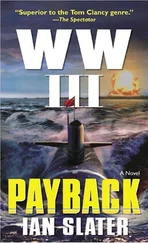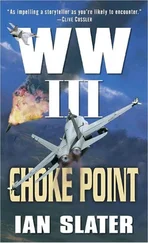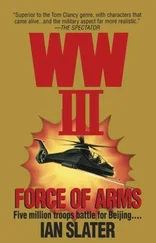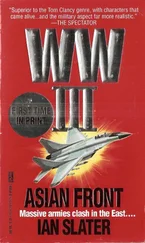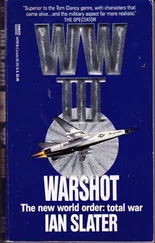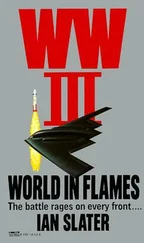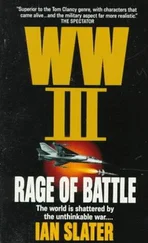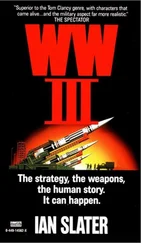“I know it’s a disk,” Freeman told Moffat, “but is there anything more specific than ‘Flow-In-Flight’ written on it?”
Moffat was finding it difficult to focus, acutely aware that his laissez-faire attitude toward the security of his fellow scientists had been a disastrous mistake.
“Professor,” repeated Freeman impatiently, “is the disk labeled in any other way?”
Moffat was staring across the lake at the cold-looking mountains. Freeman knew that his SpecWar team had probably a half hour of reasonable weather before the churning gray clouds gave way to rain.
“Professor, I know it’s tough on you at the moment, but time’s of the essence here.”
“What — oh, sorry, General. The disk was simply labeled ‘DARPA ALPHA Flow-In-Flight.’”
“What kind of data were on the disk?”
Moffat had the zombie look of someone in shock. “That’s highly sensitive material, General.”
Freeman shook his head in disbelief. Murphy’s Law was on the loose. Hadn’t Eleanor Prenty gotten through to Moffat and cleared the general of any D.S.R. — document search restriction? Or perhaps Eleanor had gotten through but Moffat couldn’t remember in the state he was in.
“All right, now listen to me, Professor. I want you to focus. Your highly sensitive material has been stolen by terrorists, and my team is going to have to know exactly what to look for.” For a moment the chief scientist stared at Freeman as if he had no idea who the general was.
“We need to focus,” Freeman reiterated.
The professor’s eyes shifted from Freeman again out to the slate gray waters of the lake. “It’s a lot of diagrams and formulas, like so much technical literature. I don’t see how anyone without a degree in—”
“Doc!” cut in Freeman. “I’ve been sent by the president.”
“Yes.” He paused. “I’ve been told that.”
“So what’s on the fucking disk? Is there a diagram, something we can key onto should we see it?”
Moffat thought for a moment. “Doreen?” he called out, and a thin woman in her twenties, chestnut curls wreathing her face, walked over from the gaggle of DARPA ALPHA scientists who were talking to the FBI and DHS agents. Moffat introduced her as Dr. Wyman and told her what the general wanted, assuring her that Freeman was “cleared to the max.”
“Well,” she told the general, “we’ve been recording data from trials of a super-cavitating, that is, super-spinning, torpedo. These super torpedoes were originally pioneered by the Russians. One of them, a Shkval class, could run at two hundred miles an hour and was aboard the Russian Kursk .”
Freeman told her he remembered the Kursk , an Oscar II class sub that sank in the Barents Sea in the summer of 2000.
“It was because of the presence of this super-spin torpedo on board,” Doreen explained, “that the Russians refused offers of help from other countries to rescue the Kursk . They were afraid that either we or the Brits would get our hands on the technology.” Doreen paused, glancing about to make sure that no DHS or FBI agents could overhear. “Our intelligence community got it anyway,” she told Freeman. “And we’ve solved problems the Russians couldn’t because since Russia went belly-up, we’ve outpaced anything the Russians had. We’ve gotten up to super-cavitation at a mile a second.”
Freeman was impressed, but Moffat’s downcast look was that of a man who knew his career was over unless his scientific brilliance could trump his appalling failure in security. He stared out at the lake again as Doreen asked him whether she could tell Freeman about “the Torshell.”
“Yes,” said Moffat softly.
Quietly, her face strained because even with her boss’s permission she was still reluctant to explain the enormity of what America had lost, Doreen explained the secret. “A Torshell,” she told him, “is a super-cavitating — that is, super-spinning — fifty-caliber torpedo-shaped rifle round that we’ve developed from our research on the super-cavitating torpedoes. We’ve drilled a wire-thin hole through the bullet. Think of the thin wire in one of those bag ties you pick up at the grocery store to twist-lock a plastic bag of vegetables or bread rolls, stuff like that.”
“Will this take long?” the general asked, glancing up at an increasingly morose sky and flicking up the leather cover of his watch.
“No,” Doreen said, “it won’t take long but you need to understand how it’s very new, this technology. Revolutionary, in fact.”
“Go on,” said Freeman, trying to contain the legendary impatience that had ironically also led to some of his greatest military breakthroughs.
“Well, as I said, because of the research here, we’ve been able to apply super-cavitating, super-spinning technology to what has been the usual fifty-caliber ammunition rounds. What we’ve done is drill into a tungsten-core bullet a nano-thin lining of incendiary chemicals. The bullet, as in the case of the much larger torpedo, cavitates or spins at super speed because a gas shoots out in front as the chemical inside morphs from a solid to a gas because of the heat from the torpedo’s, or in this case the bullet’s, propellant. This jet of gas shooting out the front forms a protective bubble around the bullet in air — or in water, in the case of the torpedo — and so the bullet or torpedo has next to no resistance.”
Freeman had understood five minutes ago. “You’ve developed a super-fast bullet.”
“Faster,” said Doreen, “than anything ever produced — except, of course, the speed of light.”
“How fast?”
“Well, the Russians, with their Shkval torpedo, have reached two hundred miles per hour in water. Slow compared to what we’ve been able to do. It’s largely a matter of who has the best computer-governed lathes. The tolerances are incredibly small.”
“So,” asked the general. “What speed has DARPA ALPHA been able to reach?”
“NUWAC,” Doreen told him, “our Naval Underseas Warfare Center, has already broken the sound barrier with a torpedo.”
“At DARPA ALPHA,” added Moffat in a voice so lifeless he might as well have been doing nothing more than giving Freeman the time of day, “we’ve developed a projectile, a bullet if you like, that’s reached Mach 10.”
“Son of—” exclaimed the general. “You’ve got my attention!”
“That’s more than eleven thousand feet a second,” Moffat continued in his monotone. “Faster than anything in the history of warfare.”
“Inside the usual cupronickel,” Doreen Wyman added, referring to a normal round’s copper-nickel jacket, “the bullet would melt and break up, even with the gas bubble reducing most of the drag. But in conjunction with NUWAC, we’ve developed a metal-carbon resin jacket that will remain intact until point of impact.”
Freeman instantly recognized the enormous implications, how such a round developed by DARPA ALPHA in this long, landlocked lake more than a thousand feet deep would change warfare forever. They were at a turning point. At Mach 10, such a round could penetrate a tank, the bullet’s superheated molten jet raising the temperature so high inside the tank it would explode.
“How long would it take,” asked Freeman, “to manufacture this supersonic round?”
“ Hyper sonic,” Moffat corrected him. “Mach 1 to Mach 5 is supersonic. We’re talking hypersonic, General.”
“All right, how long would it take to lathe a hypersonic prototype of one of these rounds?”
Doreen Wyman, Freeman could see, was going to take the Fifth on this one.
“Professor Moffat?” Freeman pressed. “How long?”
“A week — if you had the right state-of-the-art computer-controlled lathes, et cetera.”
Читать дальше

